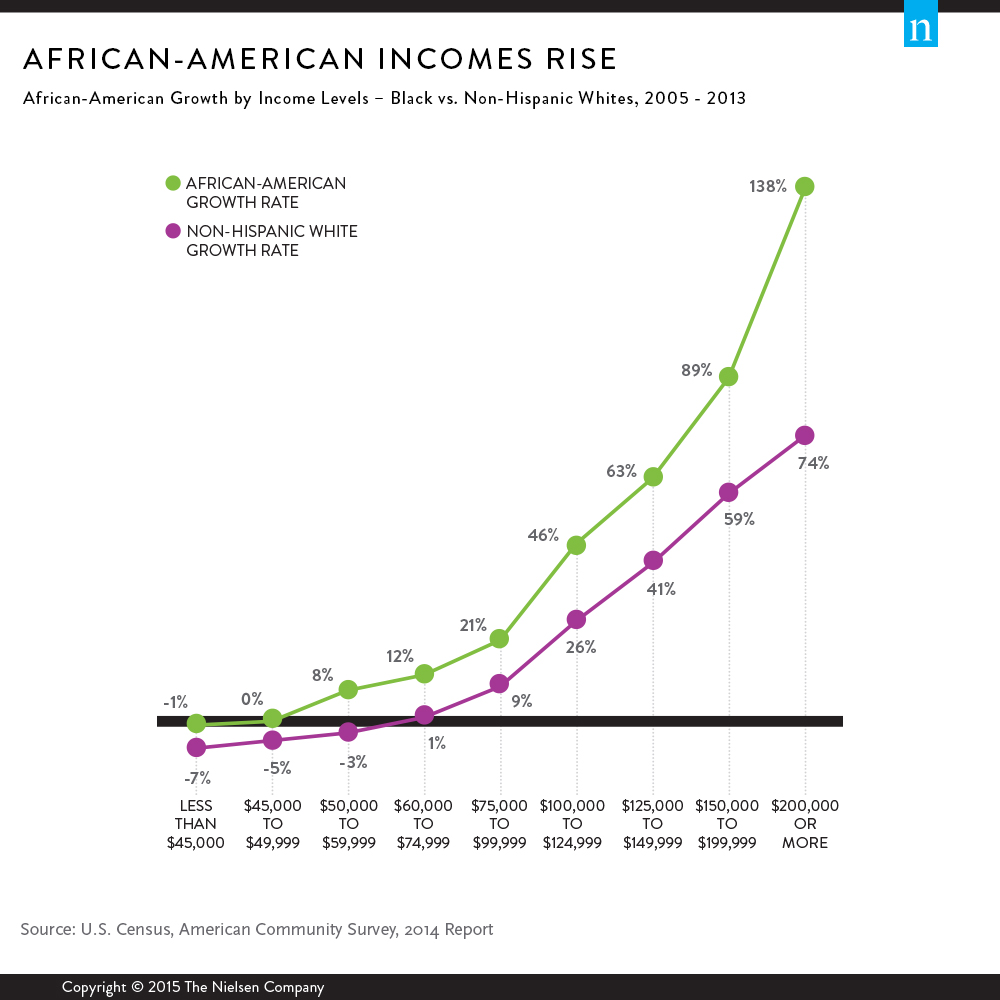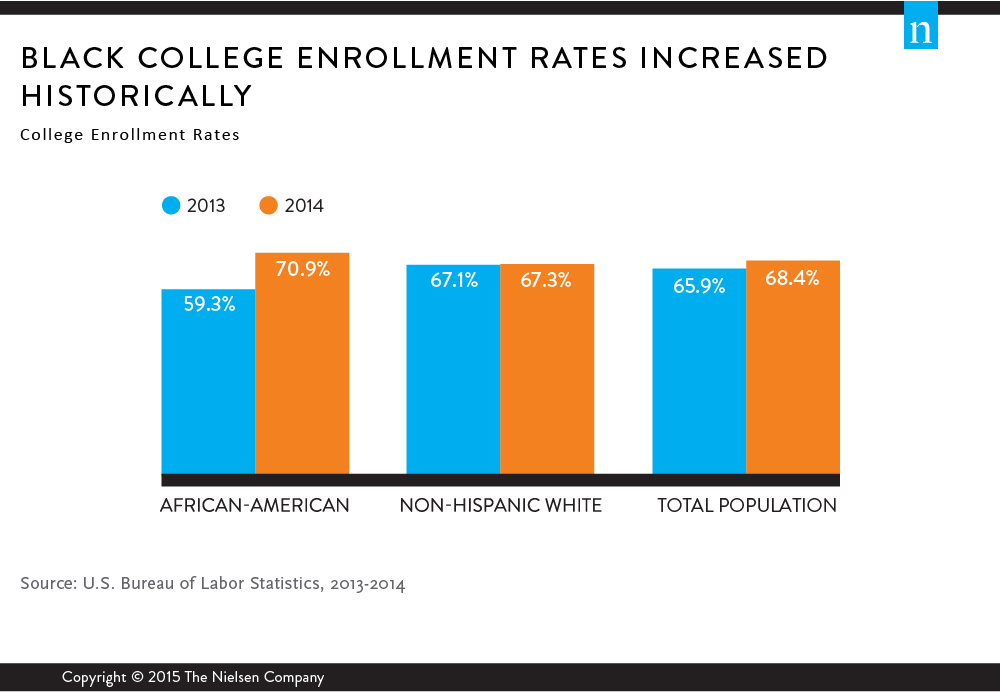African-American consumers are making gains and upending outdated stereotypes on multiple fronts—from education and income to social media and civic engagement—with affluence, influence and cultural diversity all on the rise. Nielsen’s recent report, Increasingly Affluent, Educated and Diverse: African-American Consumers –The Untold Story, explores the consumption habits of higher-income African-Americans—those with a household income of $75,000 or more. The youthfulness and vitality of African-American consumers—bolstered by an influx of affluent and educated immigrants—and historic education attainment is amplifying the buying clout and expanding the influence of these consumers across a wide spectrum of services and goods.
Household Incomes on the Rise
The median income of black households has increased 3.5% over the past three years from 2011-2013, as The Great Recession has waned. During this period, real median household income grew more among African-American households (+$793) than among white households (+$433) and among the total population, according to the U.S. Census.
From 2005-2013, the most recent data available, black income growth outpaced that of non-Hispanic whites at every level above $60,000. During that same time period, the largest increase for black households occurred in the number of households earning over $200,000, with an increase of 138%, compared with an increase of 74% for the total population.

Growth in black household income is projected to continue, as larger segments of young African-Americans join the workforce for the first time or are promoted from entry-level jobs as they age. The significantly younger median age of blacks compared to the general population means that fewer African-Americans have reached their career pinnacles and have more years of increasing income potential.
Education Attainment Outpaces Other Groups
With almost 30% of the black population under the age of 18, this population is not only young and influential but also increasingly educated. High school graduation rates for black students increased to over 70% in 2014, which outpaced the growth for all students in the nation according to the U.S. Department of Education’s National Center for Education Statistics. In fact, the college enrollment rates for African-Americans jumped significantly in 2014 to 70.9% from 59.3% the year prior, which exceeded the enrollment rate of non-Hispanic whites (67.3%), according to the U.S. Bureau of Labor Statistics.

DIVERSITY WITHIN
As the U.S. black population grows, so does its diversity. Since 1980, the number of black immigrants has more than quadrupled, reaching a record 3.8 million who live in the U.S. today. Black immigrants now account for 8.7% of the nation’s black population, or one in every 11 blacks, which is nearly triple their 3.1% share in 1980. While the Caribbean population accounts for almost 50% of black immigrants, immigrants from Africa have driven recent growth. African immigrants now account for more than a third (36%) of the total foreign-born U.S. black population, up from 7% in 1980 and up from 24% in 2000. Black immigrants are already having a significant impact in areas such as Miami, New York and Washington, D.C. And the surge in the black immigrant population in the U.S. is expected to continue. By 2060, the U.S. Census predicts that one out of every six U.S. blacks, or 16.5%, will be an immigrant.
Since the median household income for foreign-born blacks is 30% higher than U.S.-born blacks, foreign-born blacks are contributing to the increased incomes for the African-American community. Education is also very important to African immigrants, which suggests that a large part of African immigration may be more a result of a quest for opportunity than fleeing from poverty, contradicting much public perception.
Additional highlights from the report include:
- African-American adults 18+ watch 42% more traditional TV weekly than the total population
- Ninety-one percent or 31 million African-Americans listen to the radio weekly
- 11% of African-Americans with household incomes of $100,000+ use the Internet to take college courses compared to 5% for non-Hispanic whites
- Affluent blacks with incomes of $70,000+ make more trips to discount, convenience and department stores than non-Hispanic whites
- Black households with incomes of $100,000+ are more likely than non-Hispanic whites with similar incomes to say it is very or somewhat important to find information about news or current events via social media



